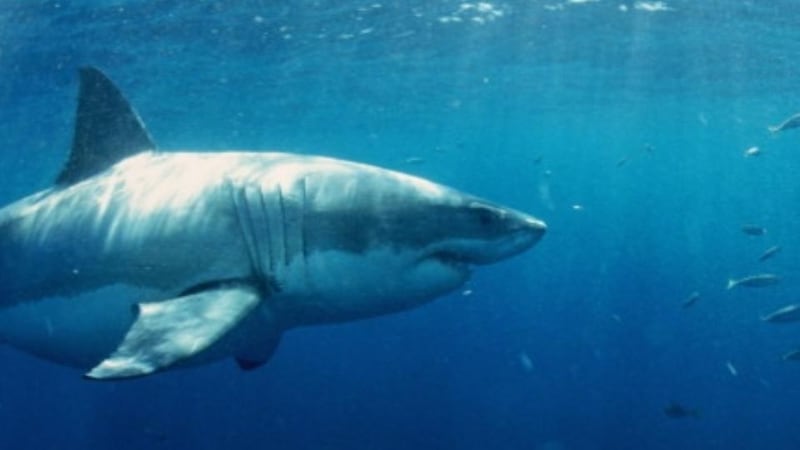A great white shark which is currently some 1,200km off the Irish coast has set a new record as the first such fish to be tracked across the Atlantic ocean.
The 907kg shark - named Lydia by scientists who tagged her off the coast of Florida in the US a year ago - has completed a transatlantic crossing in the last 24 hours, according to Massachusetts State senior marine fisheries biologist Dr Gregory Skomal.
“She has crossed the mid-Atlantic ridge and is now closer to you [Ireland] than to us, but it looks as if she is heading north,” Dr Skomal told The Irish Times.

The satellite track of her progress shows she has been “meandering” on her transatlantic adventure, and is in cooler water than she is used to.
Great whites normally frequent temperate waters, along the coastlines of South Africa, New Zealand, Australia, north and south America, the Mediterranean and into the Pacific.
They have been recorded more rarely in cooler waters off Alaska and Canada.
“We suspect she’s diving on that mountain range that she’s on, and surfacing frequently to get warm again, as she’s ‘pinging’ a lot,” Dr Skomal said.
Her satellite tag emits a signal or "ping" when close to the surface, enabling Dr Skomal and colleagues on the Ocearch shark monitoring project to follow her
movements.
“It’s a bit like watching a moon landing, as we never expected she’d head so far east, but while we know where she is, we don’t know what she’s doing,” Dr Skomal said.
“Other species of shark and tuna regularly migrate across the Atlantic,”he said.
Lydia, who was hoisted out of the water on a hydraulic platform to be tagged, has been averaging about 110km a day.
Dr Skomal has been fielding phone calls from an excited press - reporting that the world’s largest predator is “heading to Britain” or “heading to Ireland”, depending on jurisdiction. He explains that there is no way of confirming that she will reach these waters.
“She could just turn back, or continue heading north, and a lot will depend on feeding and water temperature,”he said.
Great white sharks can travel up to 1,600km a month on their extensive migrations.
A basking shark - larger than the great white, but feeding on krill - swam in the opposite direction across the Atlantic several years ago, after it was tagged off the Isle of Man, Dr Skomal pointed out, while in 2003 a great white was tracked from South Africa to Australia and back.











